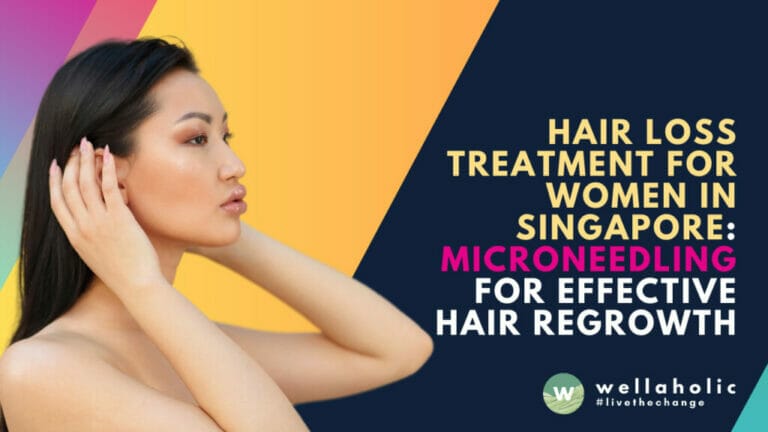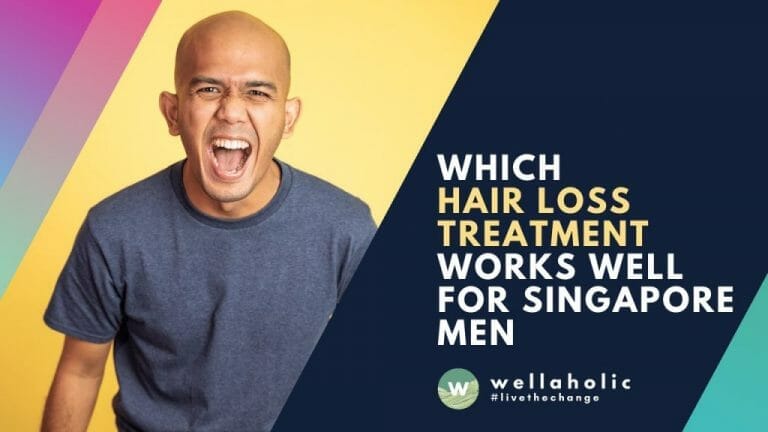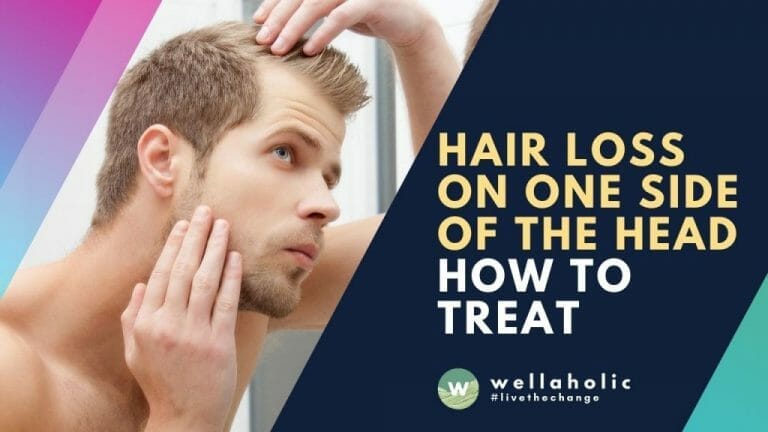
Hair Loss: Alopecia Areata & Androgenetic Alopecia
Table of Contents
- 0.1 TL:DR Summary
- 0.2 Introduction to Alopecia Areata and Androgenetic Alopecia
- 0.3 Table: Characteristics of of Alopecia Areata and Androgenetic Alopecia
- 0.4 What is Alopecia Areata?
- 0.5 What are the Symptoms of Alopecia Areata?
- 0.6 What are the reasons for Alopecia Areata?
- 0.7 How to identify Alopecia Areata?
- 0.8 What about Alopecia in Women?
- 0.9 How to Treat Alopecia
- 0.10 What is Androgenetic Alopecia?
- 0.11 What are the causes of Androgenetic Alopecia?
- 0.12 How to treat Androgenetic Alopecia?
- 0.13 Conclusion
- 0.14 Frequently Asked Questions (FAQ)
- 0.15 Book Now Pay Later
- 0.16 HairGrow™ 3X Ultimate Hair Loss Treatment
- 1 Hair Loss: Your Comprehensive FAQs on Alopecia Areata & Androgenetic Alopecia and Effective Techniques for Hair Regrowth in Singapore
TL:DR Summary
- Alopecia is a medical term for hair loss. It can affect any part of the body and have different patterns and degrees.
- Alopecia has many types and causes. Some of them are androgenetic alopecia, alopecia areata, alopecia totalis, alopecia universalis and traction alopecia.
- Alopecia can be diagnosed and measured. There are different methods to identify and classify the type, severity and extent of hair loss.
- Alopecia can be treated and prevented. There are various options to stimulate hair growth, reduce hair fall and improve hair quality.
- Alopecia treatments have different effectiveness and side effects. Some of them are medications, supplements, topical products, devices and procedures.
- Alopecia treatments require consistency and patience. It can take months or years to see noticeable results and maintenance is essential.
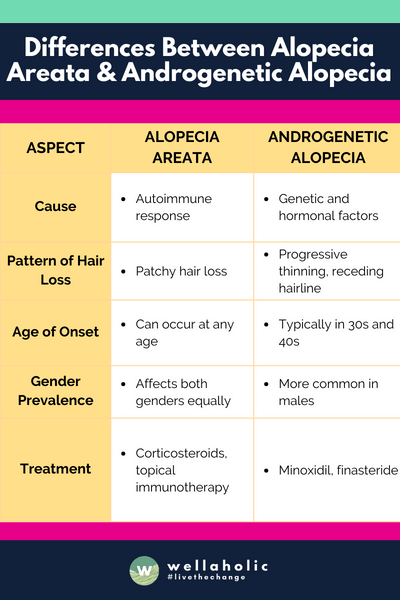
Introduction to Alopecia Areata and Androgenetic Alopecia
Throughout my career in the aesthetics industry, particularly in my role as an Aesthetic Director, I’ve encountered a wide array of skin and hair concerns. One of the most common and emotionally impactful issues I’ve come across is hair loss, specifically conditions like Alopecia Areata and Androgenetic Alopecia. These conditions not only affect a person’s appearance but also their self-esteem and overall quality of life.
Understanding Alopecia Areata and Androgenetic Alopecia: Causes, Symptoms, and Treatments for Hair Loss in Singapore
In my interactions with customers at Wellaholic and Laser Aesthetics, I’ve gained a deep understanding of these conditions. Alopecia Areata, an autoimmune disorder, leads to unpredictable hair loss, often resulting in bald patches. On the other hand, Androgenetic Alopecia, commonly known as male or female pattern baldness, is characterized by a gradual thinning of hair, which can be influenced by genetic and hormonal factors.
In the detailed article that follows, I will go into the causes, symptoms, and current treatment approaches for these types of hair loss
Table: Characteristics of of Alopecia Areata and Androgenetic Alopecia
To start off, here’s a simple a table showing the characteristics of Alopecia Areata and Androgenetic Alopecia:
| Characteristics | Alopecia Areata | Androgenetic Alopecia |
|---|---|---|
| Cause | Autoimmune disease | Genetic inheritance |
| Age of Onset | Any age | Usually after puberty |
| Pattern of Hair Loss | Patchy hair loss | Gradual hair thinning |
| Hair Loss Location | Scalp, face, and body | Crown and temples |
| Rate of Hair Loss | Sudden onset | Slow and progressive |
| Regrowth Potential | Spontaneous regrowth | Unlikely to regrow |
| Treatment Options | Corticosteroids, Minoxidil | Finasteride, Minoxidil |
| Side Effects of Treatment | May include skin thinning, bruising, or change in pigmentation | May include sexual dysfunction or decreased libido |
Hair loss is a prevalent problem among Asians. According to a survey conducted by Wellaholic in Singapore in 2022, around 44% of respondents cited hair loss as their top beauty concern.

What is Alopecia Areata?
Alopecia areata is a condition I often see in my work. It causes hair loss in small patches. These patches may not be seen at first. But they can become clear over time. The immune system attacks hair follicles. This leads to hair loss. It can happen fast. Or it can take a while. It can come back after many years.
Many people have alopecia areata. In the U.S., it affects up to 6.8 million people. The chance of getting it in a lifetime is about 2.1%. In this condition, hair follicles are still alive. So, hair can grow back any time. Parents usually don’t pass this to their kids. Even with twins, if one has it, it’s not sure the other will too. This means things in the environment might also cause it.
Sometimes, alopecia areata can lead to total hair loss. This is called alopecia universalis. It can stop hair from growing back. When hair does grow back, it can fall out again. This is different for everyone. Some lose more hair. Others lose less. Hair regrowth also varies from person to person.
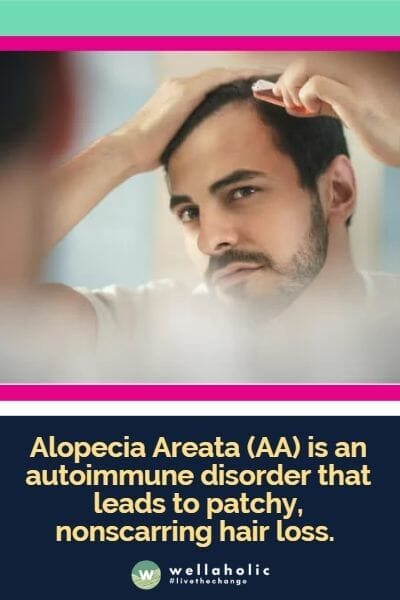
What are the Symptoms of Alopecia Areata?
Alopecia areata is a condition where hair falls out in small patches. It’s an autoimmune disease. This means the body’s immune system attacks the hair follicles. Symptoms include:
- Hair loss in clumps or patches. These show as bald spots on the head or body.
- Hair thinning and baldness. This is the main sign of the condition.
- Sometimes, there’s tingling or pain where the hair loss happens.
- Pruritus, or itchy skin, in the affected area.
- Nails can become thin and split.
These symptoms differ from person to person. If you notice new, severe, or ongoing symptoms, please see a healthcare provider.
Alopecia areata, an autoimmune disorder that causes hair loss, is more common among Asians than in other ethnic groups. The incidence of alopecia areata in Asians is estimated to be around 0.2-0.3%, based on research by Wellaholic.

What are the reasons for Alopecia Areata?
In my years as an aesthetic expert, I’ve seen how alopecia areata affects people. It’s an autoimmune disease. This means the body’s defense system attacks its own cells. For alopecia areata, it attacks hair follicles. This leads to hair loss. We don’t fully know what causes these attacks. But, some risks are known.
First, family history matters. If your relatives have alopecia areata, you might have a higher risk. Second, other health issues link to it. These include asthma, thyroid problems, and vitiligo. Lastly, seasonal allergies might raise your risk too. Understanding these factors is key in dealing with alopecia areata.
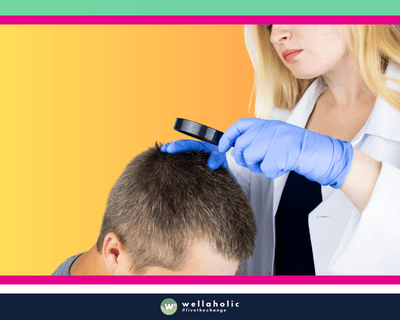
How to identify Alopecia Areata?
In my role, I often see clients with hair loss issues. Doctors can usually tell if it’s alopecia areata. They check how much hair is lost and look at the hairs under a microscope. If they can’t be sure, they might take a small piece of skin to test. Sometimes, they do a blood test to rule out other issues. This is how they find out what’s causing the hair loss.
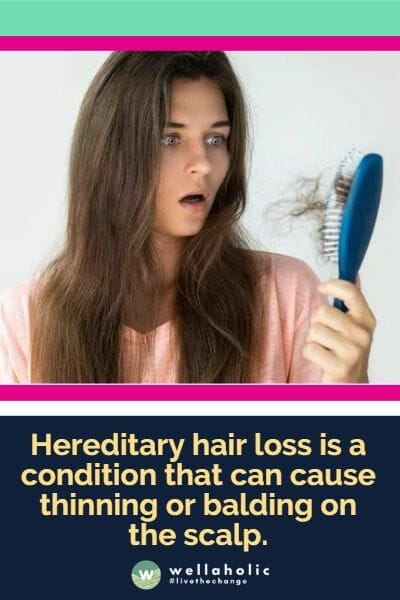
What about Alopecia in Women?
Based on my experience in engaging female customers, I’ve encountered many women dealing with alopecia. This condition can show up in different ways. The most common type is female pattern baldness. It is often passed down in families. This affects many women worldwide.
The signs of alopecia in women are much like those in men. They include:
- Hair getting thinner over time.
- Bald spots that are round or patchy.
- Hair falling out suddenly.
- In rare cases, losing all hair on the body.
- Scalp areas that scale and spread.
It’s key to recognize these symptoms early. This can help in managing the condition better.
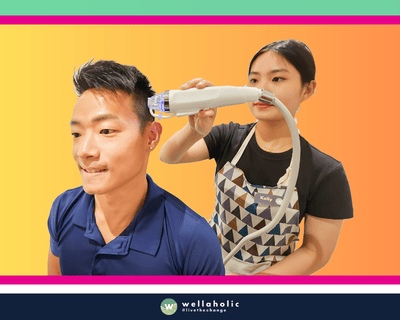
How to Treat Alopecia
The type and severity of alopecia decide the treatment. Here are some common treatments I’ve seen:
Medications help a lot. Prednisone is one. It’s an oral steroid that reduces inflammation. It’s used for alopecia areata, which is when hair falls out in patches. Minoxidil is another. It’s used to stop hair loss and sometimes grows new hair. Women often use hormone modulators like Spironolactone and Flutamide. They work well with birth control pills. Men use Finasteride for pattern baldness.
Procedures also help. Hair transplantation is one way. Doctors take healthy hair from one part of the head and move it to where the hair is thinning. This can be done with FUE or FUT methods.
Lifestyle changes can also improve hair health. Eating well helps. Foods rich in iron, Vitamin A, protein, and zinc are good choices.
Other treatments include Laser Therapy, Microneedling, and PRP. These are gentle ways to encourage hair to grow back.
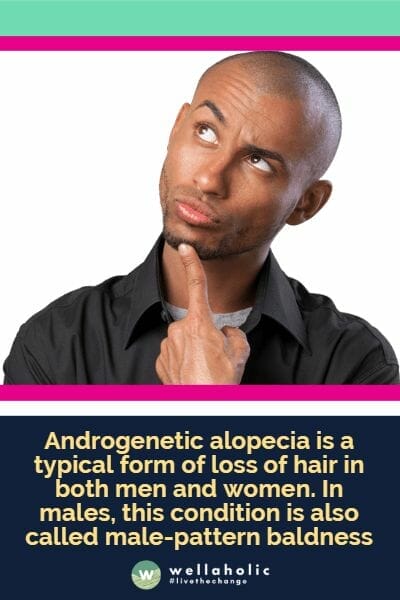
What is Androgenetic Alopecia?
Androgenetic alopecia is a common hair loss type in men and women. It is also known as male or female pattern baldness. In men, it starts with hair receding from temples and thinning on top. This can lead to baldness. In women, hair thins on top and the part widens. But, it rarely causes total baldness.
This condition links to other health issues. For men, it’s related to heart disease and prostate problems. It might also connect to diabetes and high blood pressure. In women, it often goes with polycystic ovary syndrome (PCOS). PCOS can cause irregular periods, acne, extra body hair, and weight gain.
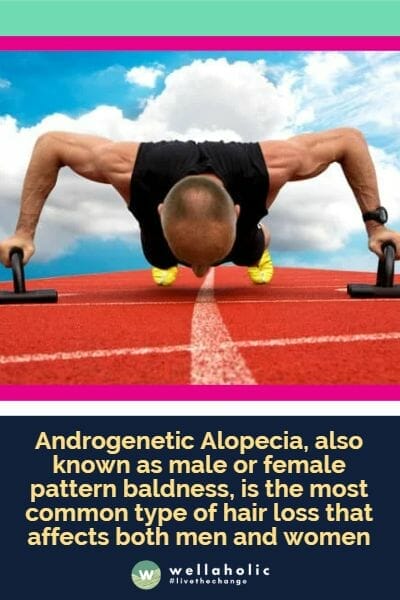
What are the causes of Androgenetic Alopecia?
In my years in aesthetics, I have often seen clients with androgenetic alopecia. This is a common hair loss type. It is often called pattern hair loss. It happens due to genes and hormones. Let me explain the main causes.
First, genetics plays a big role. A gene can make hair follicles shrink in some head areas. This leads to thinner hair. The androgen receptor (AR) gene is a key factor here.
Hormones are also important. Androgens, especially one called dihydrotestosterone (DHT), are linked to this hair loss. A genetic sensitivity to DHT is a main cause.
Age matters too. Hair growth slows down as we get older. This can lead to hair loss.
Lastly, stress and certain health issues can also lead to hair loss.
But remember, having these risk factors does not mean you will definitely get androgenetic alopecia.

How to treat Androgenetic Alopecia?
Androgenetic Alopecia as a condition leads to hair loss and can be quite distressing. But there are treatments that can help.
One common treatment is topical Minoxidil. It’s often used early in hair loss. Minoxidil can boost hair growth and prevent more loss. But you need to use it for three to six months to see results.
Men often use oral Finasteride. It stops testosterone from turning into DHT. DHT makes hair follicles smaller, leading to hair loss.
Women might use androgen-suppressive therapy. This is for female-pattern hair loss with high androgen levels.
Other options include laser therapy, microneedling, and PRP. These are less invasive and can encourage hair to grow.
Lastly, there’s hair transplant surgery. It moves hair follicles to where they’re needed. This is a more direct way to tackle hair loss.

Conclusion
In my experience, traction alopecia is often not taken seriously at first. But early action is key. I see how small changes in hair care can really help. Clients who choose looser hairstyles and use less chemicals and heat often see better hair health.
Also, traction alopecia can be hard on emotions. In my talks with clients, I see their stress and loss of confidence. This shows how vital it is to treat both the mind and the hair. For treatment, there are good options like creams and sometimes surgery. But teaching about hair care and early treatment is most important. My research and talks with experts always point to a full approach. This means combining medical care with advice on lifestyle and mental health.
Frequently Asked Questions (FAQ)
What is Alopecia Areata?
Alopecia Areata is a condition that causes hair to fall out in small patches, which can be unnoticeable. These patches may connect, however, and then become noticeable. The condition develops when the immune system attacks the hair follicles, resulting in hair loss.
What are the symptoms of Alopecia Areata?
The most common symptom of Alopecia Areata is hair loss. Hair usually falls out in small patches on the scalp. These patches are often several centimeters or less. Hair loss might also occur on other parts of the face, like the eyebrows, eyelashes, and beard, as well as other parts of the body.
How is Alopecia Areata diagnosed?
Alopecia Areata is diagnosed through a complete history and physical examination. Your doctor will ask you questions about your hair loss, look at the pattern of your hair loss, and examine your scalp. And he or she may tug gently on a few hairs or pull some out.
What are the treatment options for Alopecia Areata?
While there is no cure for Alopecia Areata, treatment can help the hair grow back more quickly and may prevent future hair loss. Treatments for mild Alopecia Areata, which affects a small area of the scalp, involve injections of corticosteroids, topical corticosteroids, and other medicines.
How does Wellaholic approach the treatment of Alopecia Areata?
At Wellaholic, we understand how Alopecia Areata can affect a person’s confidence and quality of life. Our experts are here to guide you through the process of finding the most qualified professionals to address your specific hair loss concerns. We will help you understand the range of specialists available and outline the essential qualifications to consider when seeking expert advice.
What other services does Wellaholic offer for hair loss?
In addition to treating Alopecia Areata, Wellaholic also offers a range of other hair loss treatments, including low-level laser therapy and microneedling, to help stimulate hair growth and restore your confidence.
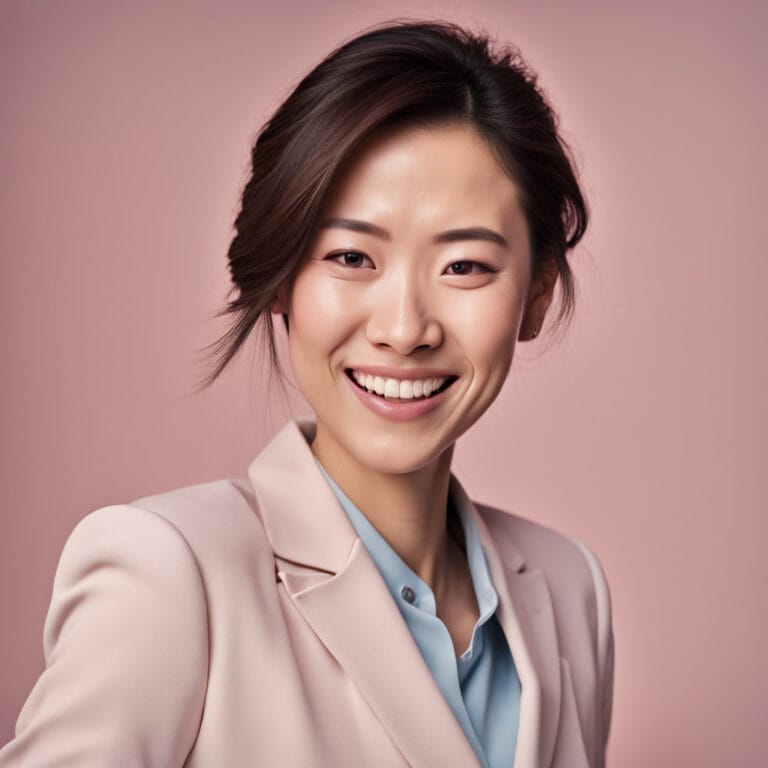
Serene Chiam, Aesthetic Director
Serene Chiam is the Aesthetic Director at Wellaholic, a well-known aesthetic chain in Singapore. She has more than ten years of experience in the aesthetics industry. With a Bachelor of Health Science (Aesthetics) and CIDESCO certifications, she expertly combines scientific knowledge with practical skills. Serene is known for her personalized approach to beauty, ensuring each Wellaholic client’s journey is unique and transformative. Her significant contributions have been pivotal in establishing Wellaholic’s reputation for excellence in aesthetic wellness.
Contact Serene at support@wellaholic.com
GET IN TOUCH
Book Now Pay Later

HairGrow™ 3X Ultimate Hair Loss Treatment
- ⭐ Supercharged Regrowth: HairGrow™ 3X is a premium plan, crafted for individuals seeking to expedite their hair regrowth journey and tackle hair loss effectively.
- ⭐ Personalized Selection: This package lets customers pick three hair loss treatments, customizing their plan to their needs.
- ⭐ Balancing Value & Variety: HairGrow™ 3X provides a unique blend of cost-effectiveness and choice, granting access to top-tier treatments at a significant discount.
- ⭐ Free Supply of Minoxidil. HairGrow™ 3X also includes a monthly supply of Minoxidil with Royal Jelly to jumpstart hair growth.
- ⭐ Award-Winning. Wellaholic’s treatments have been recognized by top beauty publications such as Daily Vanity, Beauty Insider, and Tropika Club Magazine.
- ⭐ Over 2000 Verified Customer Reviews. Wellaholic has over 30 industry awards and over 2000 positive reviews from customers, and >50% are repeat customers.




